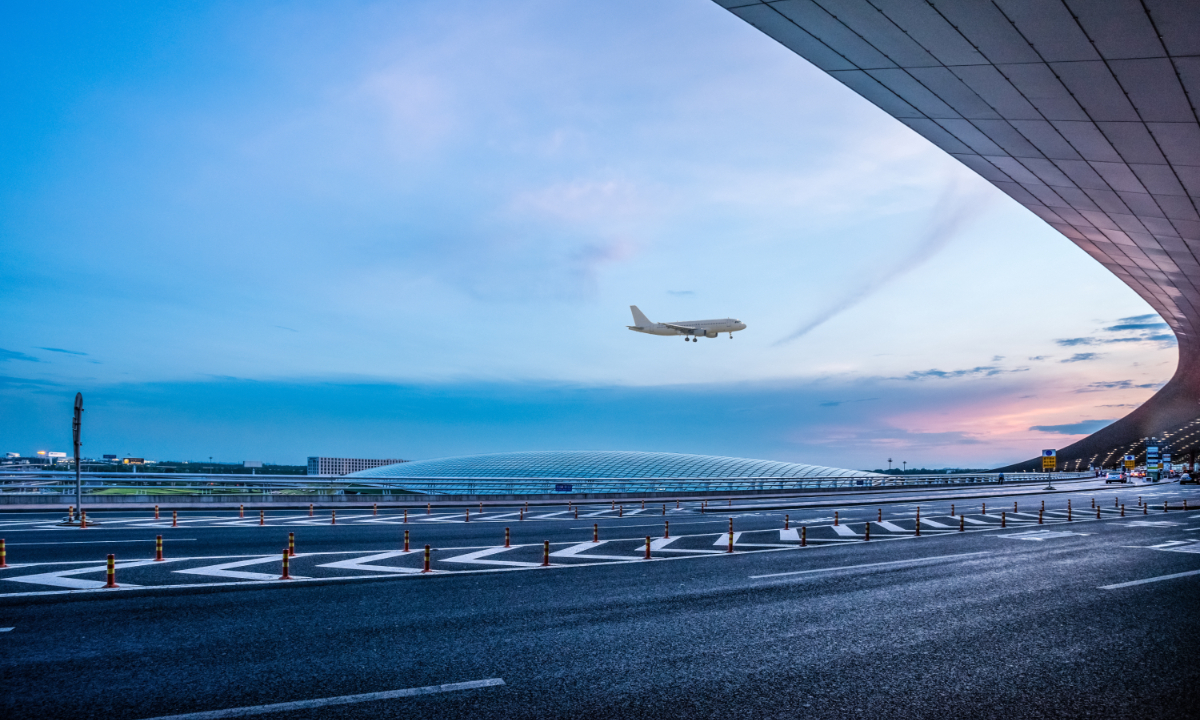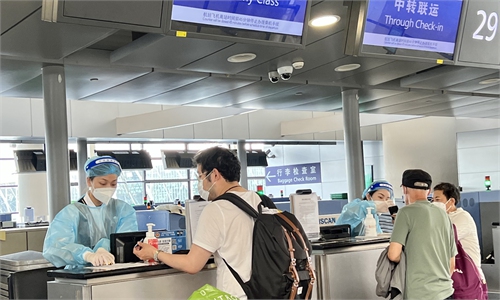Number of daily flights in upward trend, a turning point for bleeding aviation industry expected

Photo: VCG
The number of daily flights has continuously climbed to 6,000 across China, a record high after mid-March, when Shanghai was still in lockdown.
Although the numbers still lag behind the peak before epidemic, market watchers predicted that the coming summer travel season could be a turning point for the industry, also boosted by the government's support.
Data from information provider VariFlight showed that domestic passenger flight volume on Monday reached more than 6,000 flights for the first time in more than two months, returning to the levels in early March. On Tuesday, data showed the flight numbers stood at 6,117.
Travel has showed a V-shape as passenger traffic on Sunday exceeded 600,000.
As Shanghai embraces the full recovery of life and production, two airports in the city managed 66 domestic flights and 42 international flights during the Dragon Boat Festival holidays, from June 3 to 5.
As different cities have reopened interprovincial travel, the traffic flow also increased.
According to the travel site Qunar.com, as of 7:00 pm on Monday, the number of air ticket bookings recovered to 70 percent before the current wave of the virus. In the past week, the number of air ticket bookings has continued to grow and travel to cities such as Guangzhou and Shenzhen has recovered.
Lan Xiang, president of the big data research institute of Qunar.com said the overall air ticket bookings have increased significantly as the epidemic situation in various regions has gradually stabilized and travel policies have resumed.
Data from Qunar.com showed that the average price paid for Dragon Boat Festival air tickets last year was the lowest between 2019 and 2021, but this year's price has risen slightly compared with last year, with an average price of 747 yuan ($111).
The coming summer season could be a turning point for the industry with high school and college entrance examinations ending soon, which may welcome a windfall for travel and air ticket sales, Zheng Hongfeng, CEO of VariFlight, told the Global Times on Tuesday.
Meanwhile, the government is mulling a two-month subsidy plan to keep afloat all domestic passenger airlines in a bid to boost the struggling industry battered hard by COVID-19.
Specifically, the subsidy plan proposes giving 24,500 yuan ($3,672) for each flying hour when the number of daily flights reaches 4,500 across the nation, up from an average of 2,700 flights per day now.
The Civil Aviation Administration of China (CAAC) said the policy has been conducted for around 10 days and it will monitor actual flights on a weekly basis to provide the proper subsidies for the carriers.
The CAAC said the frequent cancellation of flights has been greatly improved after the implementation of the subsidy policy and the routes with high passenger demand have been increased.
As of the rising tickets prices, the CAAC said domestic airline fares are mainly market oriented, and the airlines independently determine the specific fares according to the market supply and demand conditions.
Before the implementation of the subsidy policy, due to the serious shortage of demand, the average price of domestic routes was much lower than the average fare in the industry.
Chinese airlines applied a fuel surcharge to domestic routes from Sunday, the fourth hike this year. One adult passenger will pay 140 yuan for routes longer than 800 kilometers, up from 20 yuan in February of this year.
According to the financial report data for Q1 of 2022, the total revenue of the seven A-share listed airlines was only 58.8 billion yuan ($8.8 billion), the lowest level since 2019, and the total loss reached 28 billion yuan ($4.2 billion), far exceeding the data for the same period in 2020 and 2021.


